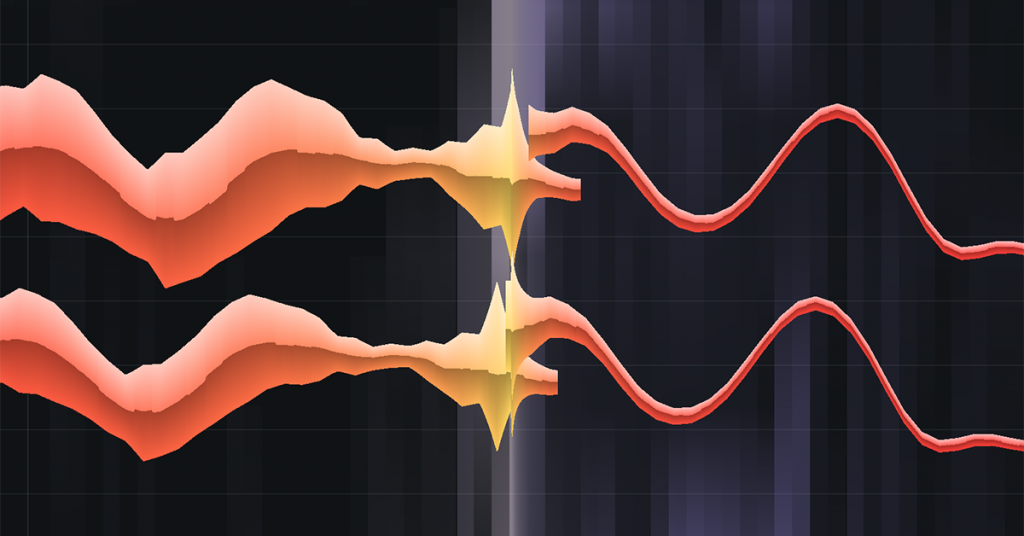The present-day Rip Audio format is an evolution of the way recognized notes were stored in early versions of AudioScore. It is a complete departure from waveforms, storing full stereo audio as note and harmonic objects, each containing all the panning, amplitude and pitch information required to recreate the audio as waveforms, so that it can then be played through speakers and headphones.
As well as providing direct control over notes and harmonics, and the ability to display the musical information fluidly on-screen, Rip Audio has the advantage of being able to apply highly dynamic and sophisticated edits and effects when playing back live audio, all using minimal processing power.

A philosopher once asked, “If a tree falls in a forest and no one is around to hear it, does it make a sound?”. After all, the falling tree is simply producing vibrations from hitting the ground, and these can only be perceived as sound when heard by a listener. In a similar way, the vibrations in a song’s waveform do not illustrate the intentions of the composer until a human brain perceives it as music.
Waveforms are effectively an encoded transport medium for audio, and even when viewed on screen using spectral analysis, without special training, they represent little in the way of what we hear as notes and passages of music. In our minds, we are able to reimagine melodies, and even a child can sing an improvised harmony along to a favourite track. When using a computer however, these simple human feats are difficult even when using the most advanced waveform manipulation tools. A method of storing audio in a way related to how humans perceive audio would provide more meaning and enable more dynamic and powerful editing control.
This is one of the reasons we created the Rip audio file format and accompanying technologies. Rip files do not contain waveforms, but instead, highly detailed note, harmonic, frequency and amplitude information.
To illustrate how different Rips are from existing formats, if we want to quickly create a harmony, it is a simple matter of copying the relevant notes and adjusting their pitches. No complicated, slow or energy consuming processing of waveforms occurs — the pitches of the notes are simply updated, as if they were MIDI.
When we want to play back the audio, notes are converted into sine waves and output to the speakers as conventional waveforms. Parallels can be made with the brain converting notes we want to sing into air vibrations, with the use of vocal cords and other anatomy.
More background about what makes the Rip Audio format so special can be found in the article More Than A Waveform by Resolution magazine.
